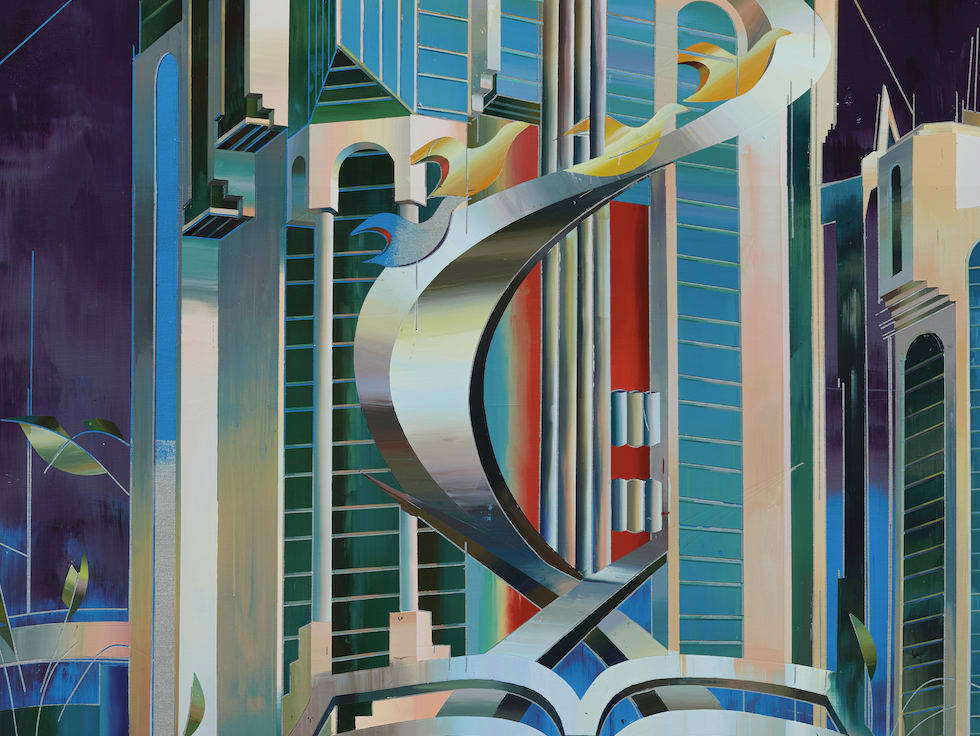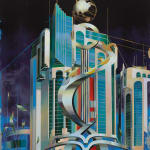



Cui Jie
Salam Tower, Doha, 2020
Acrylic on canvas
200 x 160 cm
78 3/4 x 63 in
78 3/4 x 63 in
Copyright The Artist
Further images
Cui Jie is fascinated by the aesthetics of modernist and postmodernist buildings. With their gigantic size, their concrete facades, they reflect a fascination for the aesthetics of “global” architectures. The...
Cui Jie is fascinated by the aesthetics of modernist and postmodernist buildings. With their gigantic size, their concrete facades, they reflect a fascination for the aesthetics of “global” architectures. The artist’s inspiration is drawn from buildings in Yaunde, Doha, Belgrade, and New Taipei City. The buildings are not portrayed as static but are imagined as a “flux,” crossed by roads, connected in a whirlwind of constructions and infrastructure. Salam Tower stands by the Al Dafna shore in Doha. It was a part of the government’s project to redevelop the area after the 1979 oil crisis, which now only drowns in the new Doha skyline.
As the artist says, “I have never been to the aforementioned cities, but the buildings all seem familiar to me, as if I had seen them in Beijing or Shanghai before they were torn down. In the last four decades, in the rapid urbanisation movement […], remembering the past becomes an act that could only be supported by the imagination.”
Here the work plunges us into the symbolic dimension of post-modern mythology and thus invites us to start sorting out the architectural heritage of global architecture.
As the artist says, “I have never been to the aforementioned cities, but the buildings all seem familiar to me, as if I had seen them in Beijing or Shanghai before they were torn down. In the last four decades, in the rapid urbanisation movement […], remembering the past becomes an act that could only be supported by the imagination.”
Here the work plunges us into the symbolic dimension of post-modern mythology and thus invites us to start sorting out the architectural heritage of global architecture.



